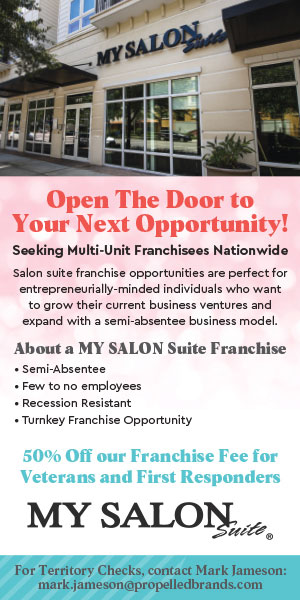Leaders manage and managers lead

"Leaders are visionaries with a poorly developed sense of fear, and no concept of the odds against them. They make the impossible happen."―Robert Jarvik, inventor of the first successful artificial heart
In 1977, Abraham Zaleznik published an article in the Harvard Business Review that has influenced leadership and management theory for two generations. He wrote that management and leadership are two entirely different functions. Many who read the article ran with that opinion, and in the fullness of time, people began to see leaders as superheroes with outstanding characteristics lacking in managers.
Since the Zaleznik article was published, more than 4,000 documented definitions and characteristics of leaders vs. managers and leadership vs. management have surfaced. In the 52 years I have worked with and coached people responsible for envisioning the right direction (leaders) and getting there the right way (managers), I have come to believe high-performing cultures have leaders who are also effective managers and managers who are effective leaders.
In fact, their culture demands such flexibility, and it is what their compensation (financial) and recognition (psychological) systems reward. Owners, leaders, and managers in organizations with a high-performing culture understand and live in a mutually beneficial relationship, and the outcome is sustainable excellence separating the high-performing company from the crowd. This happens by cultivating a workplace that becomes a garden where people can grow rather than a prison where they labor.
Here are some of the important steps in cultivating a workplace garden that provides a renewable crop of deeply committed employees, managers, leaders, and possibly future owners. These principles are not new; in fact, they date back to the dawn of time.
1) Develop, communicate, and reward behavior consistent with your vision and guiding principles. These principles influence the level of inspiration and aspiration, especially when they are part of the way business is conducted on a 24/7 basis. Share your vision and your expectations with everyone, every day, and use your formal and informal leaders and influencers to get the job done. Doing so allows you to increase the likelihood of an aligned workforce.
"You don't need to be able to see to have a vision."—Helen Keller
2) Focus on dependability rather than accountability. Identify and define the characteristics of the key people in your organization. Oddly enough, the key characteristics of effective owners, leaders, managers, and employees have much in common.
Basically, those characteristics are identical to those of decent human beings. Since 1977, there have been a multitude of posters, charts, and tables declaring that "these"
are the most important. Eight that seem common to decent people are humility, kindness, truthfulness, balance, focus, discipline, courage, and dependability.
"…(y)ou get your first job on your ability and every job after that on your dependability."—Mike Royer
3) Recognize that people already have what it takes to be successful. Most exceptional people, whatever their formal organizational role, realize and strive for inspiration, relevant autonomy, personal/professional development, and feedback on their performance. As a result, they do ordinary things extraordinarily well, making them both successful and effective in their roles and leaders who manage and managers who lead.
Part of almost every coaching engagement involves reminding people that success is never certain, and failure is never final—unless, of course, you ring the bell and end the pursuit of your own dream. Many admired and successful people, regardless of their position title, were viewed by others as not having what it takes to be sustainably excellent in their chosen professions or roles. Even so, they still found a way to excel as influential employees, managers, and leaders.
"When it is obvious that goals cannot be reached, do not adjust the goals, adjust the action steps."—Confucius
Whether you believe you are a manager who also leads or a leader who also manages, you are most effective when positional power and personal influence lead to a desirable and mutually beneficial outcome. Rethink your mental models about management and leadership as a two-fold single function, not two separate functions.
Go back and take another look at the eight characteristics in bullet point two. Once you achieve self-mastery, you will not have to wonder whether you manage and lead at the same time. You will just do it.
"A body in motion tends to remain in motion."—Isaac Newton
Dan Schneider, M.A., is a partner with The Rawls Group, a national business succession planning firm. For more information, visit seekingsuccession.com or email info@rawlsgroup.com.
Share this Feature
Recommended Reading:
Comments:
comments powered by Disqus| ADVERTISE | SPONSORED CONTENT |
FRANCHISE TOPICS
- Multi-Unit Franchising
- Get Started in Franchising
- Growth
- Operations
- Open New Units
- Leadership
- Marketing
- Technology
- Legal
- Awards
- Rankings
- Trends
- Featured Franchise Stories
| ADVERTISE | SPONSORED CONTENT |
$100,000
$150,000




 The multi-unit franchise opportunities listed above are not related to or endorsed by Multi-Unit Franchisee or Franchise Update Media Group. We are not engaged in, supporting, or endorsing any specific franchise, business opportunity, company or individual. No statement in this site is to be construed as a recommendation. We encourage prospective franchise buyers to perform extensive due diligence when considering a franchise opportunity.
The multi-unit franchise opportunities listed above are not related to or endorsed by Multi-Unit Franchisee or Franchise Update Media Group. We are not engaged in, supporting, or endorsing any specific franchise, business opportunity, company or individual. No statement in this site is to be construed as a recommendation. We encourage prospective franchise buyers to perform extensive due diligence when considering a franchise opportunity.